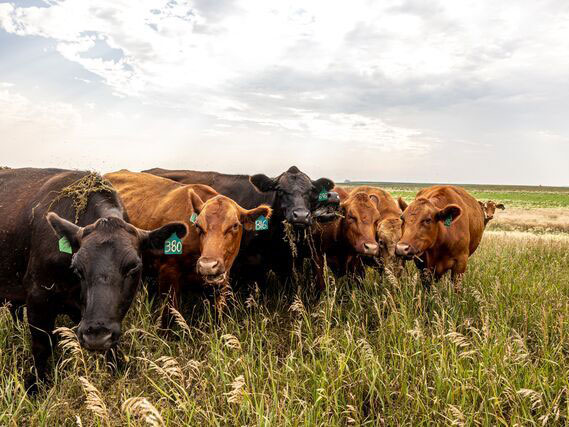Key Elements to Think About When Deciding On Animals Danger Security (LRP) Insurance Coverage
When evaluating choices for Animals Risk Security (LRP) insurance policy, a number of vital elements call for careful factor to consider to ensure efficient threat management in the farming industry. Choosing the ideal protection alternatives tailored to your certain animals procedure is critical, as is comprehending just how premium costs associate with the degree of defense offered.
Coverage Options
When taking into consideration Livestock Risk Security (LRP) insurance coverage, it is vital to understand the different insurance coverage choices readily available to mitigate dangers in the farming market. Animals Danger Defense (LRP) insurance policy uses different protection choices customized to fulfill the diverse needs of livestock producers. Bagley Risk Management. One of the main protection alternatives is rate insurance coverage, which shields versus a decrease in market rates. Manufacturers can pick the insurance coverage degree that lines up with their cost danger administration goals, enabling them to secure their procedures against prospective monetary losses.
An additional essential protection choice is the recommendation duration, which determines the size of time the insurance coverage holds. Manufacturers can choose the endorsement period that best suits their production cycle and market problems. In addition, protection levels and prices vary based upon the kind of livestock being guaranteed, giving manufacturers the flexibility to tailor their insurance coverage plans according to their certain requirements.
Recognizing the different insurance coverage options readily available under Livestock Threat Security (LRP) insurance policy is critical for manufacturers to make informed decisions that effectively protect their animals procedures from market unpredictabilities.
Premium Costs

Livestock Threat Security (LRP) insurance policy gives necessary protection options customized to minimize dangers in the agricultural field, with a substantial element to consider being the estimation and framework of premium costs. These consist of the type and number of livestock being guaranteed, the protection degree picked, the present market prices, historic rate information, and the size of the protection period.
Premium expenses for LRP insurance policy are usually computed based upon actuarial data and risk assessment models. Insurance providers examine historic information on livestock rates and production prices to figure out an appropriate costs that reflects the degree of risk included. It is vital for livestock manufacturers to very carefully evaluate premium expenses and protection options to ensure they are adequately secured versus prospective economic losses due to negative market problems or unforeseen events. By recognizing how superior prices are calculated and structured, producers can make educated choices when selecting the best LRP insurance plan for their procedure.
Qualified Livestock
The determination of qualified animals for Animals Danger Defense (LRP) insurance policy coverage entails mindful factor to consider of certain requirements and qualities. Animals types that are generally eligible for LRP insurance policy consist of feeder cattle, fed lambs, cattle, and swine.
Feeder livestock, for instance, are typically qualified for LRP coverage if they fall within defined weight ranges. Lambs are an additional group of livestock that can be thought about for LRP insurance policy, with factors such as weight and age playing a vital role in determining their qualification.
Prior to choosing LRP insurance policy for animals, producers ought to very carefully assess the eligibility requirements laid out by the insurance policy supplier to ensure their animals Web Site satisfy the needed needs for insurance coverage.
Plan Flexibility
Plan adaptability in Livestock Risk Defense (LRP) insurance allows manufacturers to customize protection to suit their details requirements and take the chance of administration strategies. This adaptability encourages livestock manufacturers to personalize their insurance policies based on variables such as the type of animals they own, market problems, and specific danger resistance levels. By supplying customizable choices, LRP insurance allows manufacturers to successfully manage their danger direct exposure while securing their animals procedures against unforeseen market volatility.
Insurance Claims Refine
Upon experiencing a loss or damages, manufacturers can initiate the insurance claims process for their Livestock Threat Protection (LRP) insurance coverage by without delay contacting their insurance coverage supplier. It is essential for manufacturers to report the loss asap to accelerate the cases procedure. When reaching look here out to the insurance company, manufacturers will need to give detailed information about the event, including the date, nature of the loss, and any type of appropriate paperwork such as veterinary records or market value.

After the analysis is total, the insurance policy company will certainly make a decision pertaining to the claim and connect the outcome to the manufacturer. The producer will certainly receive payment according to the terms of their Livestock Danger Protection (LRP) insurance coverage policy if the case is authorized. It is crucial for you could check here manufacturers to be knowledgeable about the insurance claims process to ensure a smooth experience in case of a loss

Final Thought
To conclude, when selecting Animals Risk Protection (LRP) insurance coverage, it is necessary to think about protection choices, premium expenses, eligible animals, plan versatility, and the claims process. These vital variables will assist ensure that herdsmans and farmers are properly protected versus potential threats and losses related to their livestock operations. Making an educated decision based on these factors to consider can ultimately lead to far better economic safety and assurance for animals producers.
Animals Danger Protection (LRP) insurance policy uses different coverage choices customized to satisfy the diverse requirements of livestock producers.The decision of eligible livestock for Livestock Danger Protection (LRP) insurance policy protection involves cautious factor to consider of particular standards and attributes.Policy versatility in Livestock Danger Protection (LRP) insurance coverage permits producers to customize coverage to fit their specific requirements and take the chance of administration techniques.Upon experiencing a loss or damage, producers can start the claims process for their Animals Threat Protection (LRP) insurance policy by promptly contacting their insurance policy supplier.In verdict, when selecting Livestock Danger Protection (LRP) insurance, it is important to consider protection options, premium prices, eligible livestock, policy flexibility, and the cases procedure.